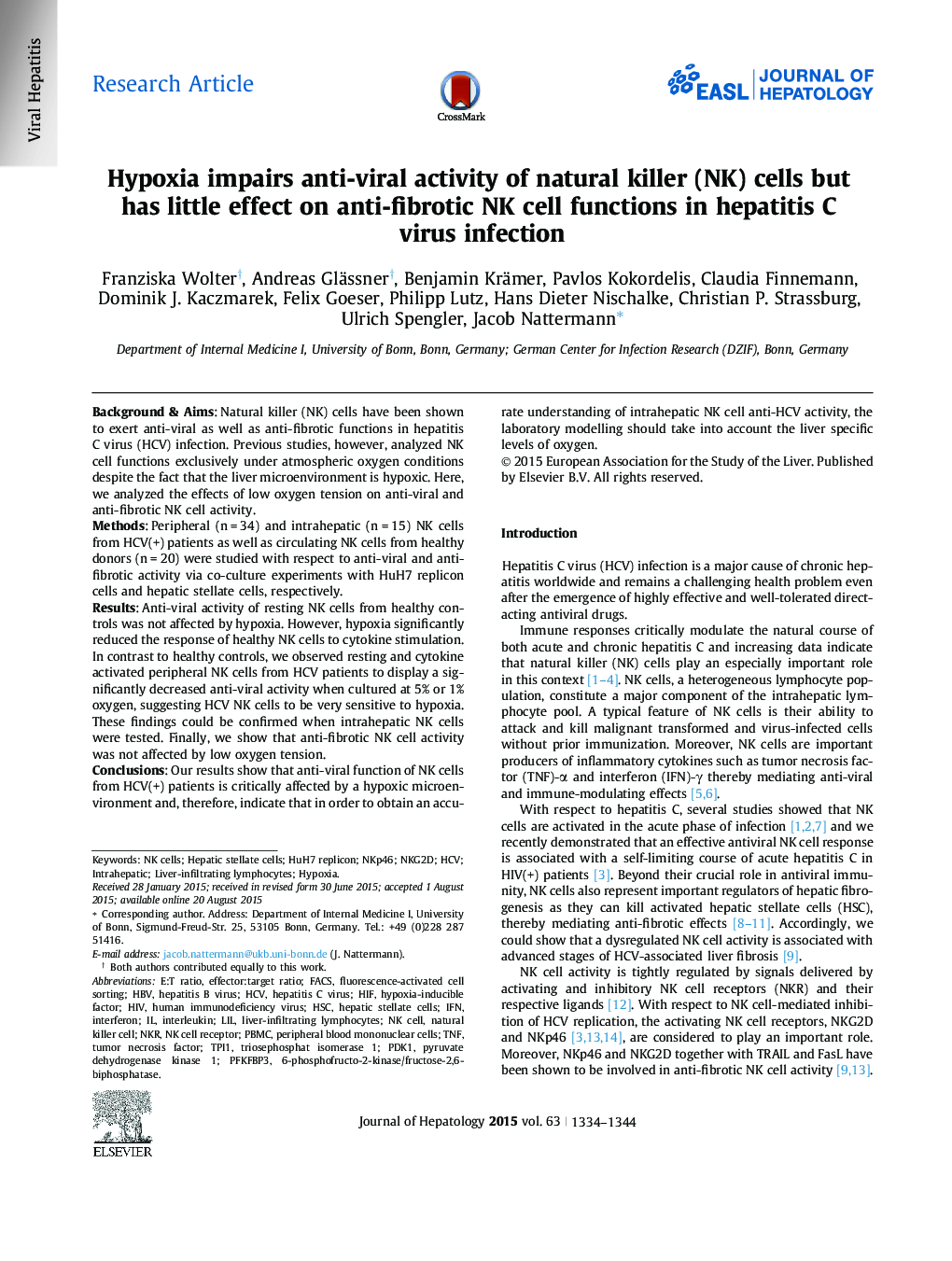| Article ID | Journal | Published Year | Pages | File Type |
|---|---|---|---|---|
| 3313631 | Journal of Hepatology | 2015 | 11 Pages |
Background & AimsNatural killer (NK) cells have been shown to exert anti-viral as well as anti-fibrotic functions in hepatitis C virus (HCV) infection. Previous studies, however, analyzed NK cell functions exclusively under atmospheric oxygen conditions despite the fact that the liver microenvironment is hypoxic. Here, we analyzed the effects of low oxygen tension on anti-viral and anti-fibrotic NK cell activity.MethodsPeripheral (n = 34) and intrahepatic (n = 15) NK cells from HCV(+) patients as well as circulating NK cells from healthy donors (n = 20) were studied with respect to anti-viral and anti-fibrotic activity via co-culture experiments with HuH7 replicon cells and hepatic stellate cells, respectively.ResultsAnti-viral activity of resting NK cells from healthy controls was not affected by hypoxia. However, hypoxia significantly reduced the response of healthy NK cells to cytokine stimulation. In contrast to healthy controls, we observed resting and cytokine activated peripheral NK cells from HCV patients to display a significantly decreased anti-viral activity when cultured at 5% or 1% oxygen, suggesting HCV NK cells to be very sensitive to hypoxia. These findings could be confirmed when intrahepatic NK cells were tested. Finally, we show that anti-fibrotic NK cell activity was not affected by low oxygen tension.ConclusionsOur results show that anti-viral function of NK cells from HCV(+) patients is critically affected by a hypoxic microenvironment and, therefore, indicate that in order to obtain an accurate understanding of intrahepatic NK cell anti-HCV activity, the laboratory modelling should take into account the liver specific levels of oxygen.
Graphical abstractFigure optionsDownload full-size imageDownload high-quality image (89 K)Download as PowerPoint slide
